Struggling to get your emails noticed?
Email success is one tweak away.
So, how do you structure and write an email that both gets more replies and pleases your prospects? What’s the perfect email structure that’s destined to drive the outcomes you’re targeting?
Whether that’s a meeting, subscription, free trial, backlink exchange, recruiting talent… doesn’t matter. The words and funnels are different, but the main formula is always the same.
Write a cold email with our free cold email generator
The anatomy of an email
A good analogy for emailing is the qualification round in Formula 1. In this round, there are checkpoints that a driver has to pass as fast as he can. Once added together, they tell which driver drove the winning lap.
Cold email campaigns are exactly the same.
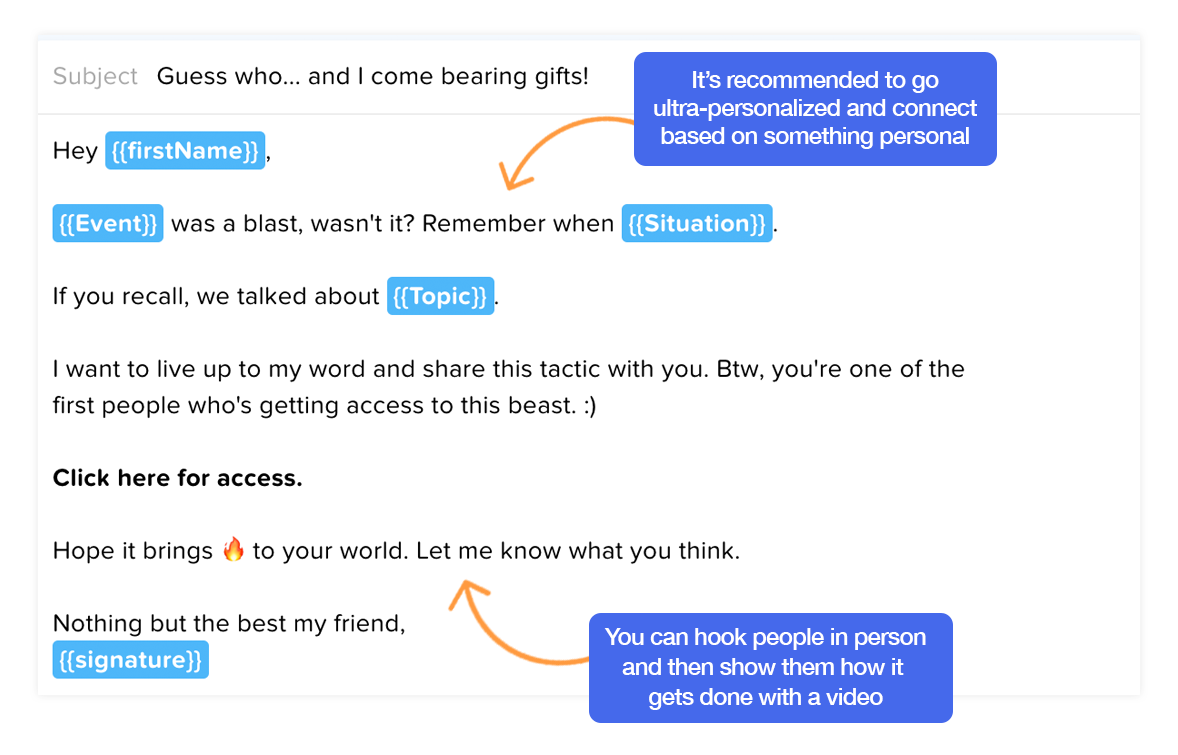
You need a solid subject line that makes your prospect want to open your email. Checkpoint 1️✅
Then, your cold email content needs to entertain the person who’s reading it and have them reply, click on a link or book a meeting. Checkpoint 2️✅
Finally, there’s that business outcome you’re looking to score. This depends on your business. Say you book a meeting thanks to a cold email. Now you’re in the final, chasing that conversion. Checkpoint 3️
Add them all together and you get yourself a nice-looking cold email. This is precisely what we’re going to talk about right now.
Your email tone
Write a professional email or go with an informal approach… what works better?
The truth is that they both work! It depends on your personal style and the characteristics of your audience.
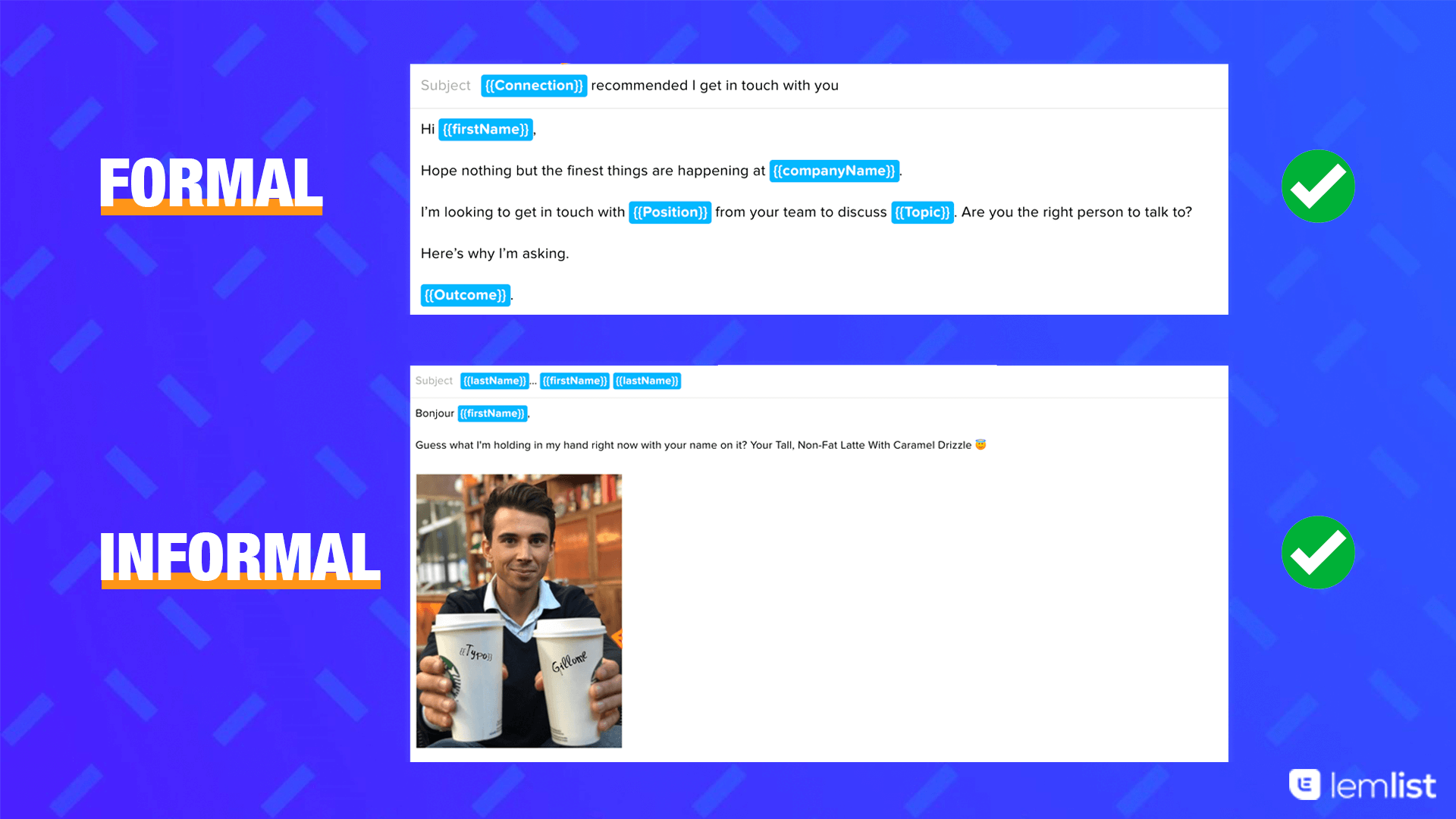
Aalways be comfortable with the words you’re using and to personalize the message for the person who will be reading it.
Read the situation as it is and adapt to it.
- CMO of a big company who’s 40+ years old vs. Marketing Team Lead in a startup of your age – two different messages
- Writing to somebody you don’t know vs. a person you met before – two different messages
- Reaching out to someone from the USA vs. someone from China – two different messages
- Pain points of a big company vs. of a smaller business – two different messages
Regardless of what you decide, be sure to execute it cleanly. Proofread your work no matter what to make sure that you don’t have typos, or grammatical errors, and that your tone is consistent.
As in life, beauty is in diversity. Adapt both the content and tone to the prospect who will receive your cold email.
Your subject line
As mentioned earlier, the subject line plays a significant role in whether or not your prospect will decide to open an email.
Of course, your personal and company names both contribute to the open rate. In other words, this is the strength of your brand and your relationship with the prospect.
The subject line is like a headline of an article. You scroll down your feed, a title grabs your attention, and, boom, you open the article.
The dynamics behind the subject line are the same. It’s the hook that gets people to open up and something that sets an expectation in their minds for what they are about to read.
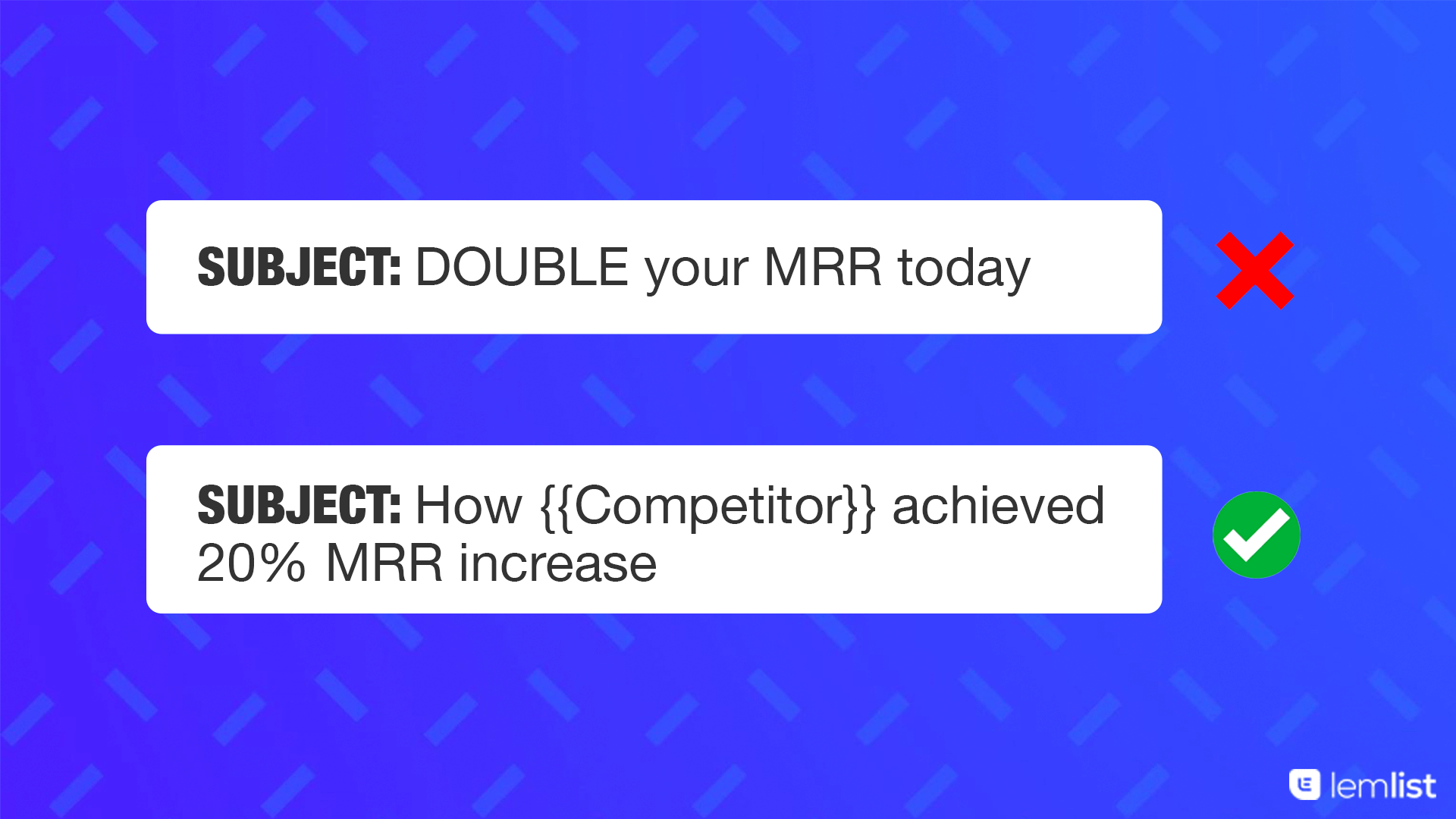
Tips when writing a subject line:
- Think about the length and the fact that on a mobile less text is visible
- Forget about click baits and CAPS LOCK… it’s just not worth it
- Don’t reveal too much, but get people intrigued and excited
- Not sure what subject line is better? Let the market decide by A/B testing it!
For you: 56 cold email subject line examples that crushed it
Your greeting
What’s the best greeting to use in cold emails?
Needless to say, how you greet people plays a part. For starters, ALWAYS use the {{firstName}} tag. Writing “Hey there” or just “Hey” proves you’re a lazy person who does sloppy research. :/
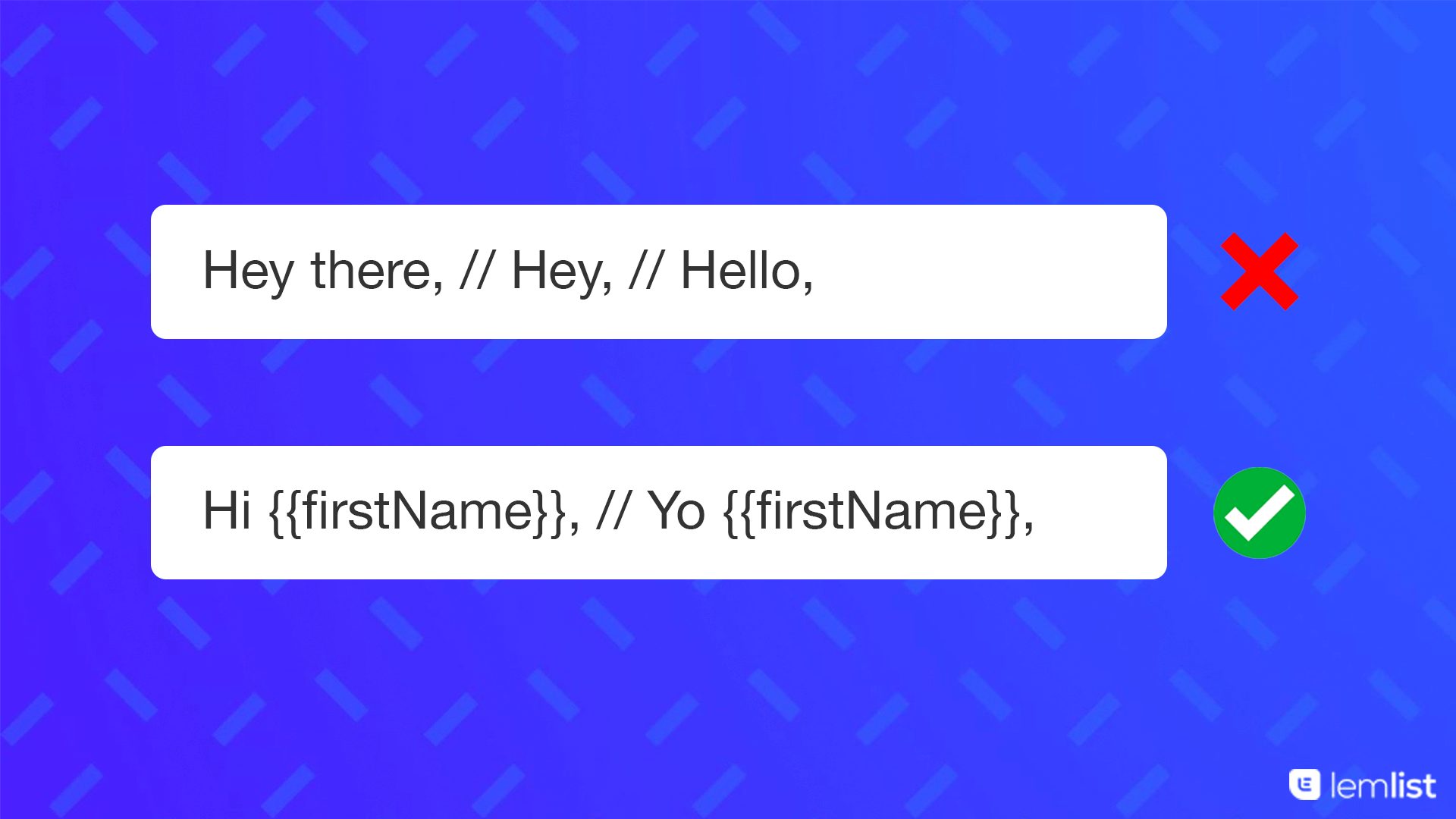
Go with either “Hey” or “Hi” unless you know the person from before. In this case, you, can be a bit looser with a “Yo” or “Whaaaat up?”.
These are the two factors worth mentioning. However, here are a few ideas here that you can play with:
- Informal greetings: Hey or Hi + {{firstName}}
- Formal greetings: Hello + {{firstName}}
- Don’t have a first name? Then… Hey {{companyName}} team
Your intro line
The next component is essential. If the first sentence is promotional or generic, prospects don’t bother reading the rest.
How you start your cold email is critical because it helps you achieve the following:
- Create a connection with the prospect
- Show your work ethic… the more genuine the intro, the better your first impression
- Motivate the prospect to read the rest of the email
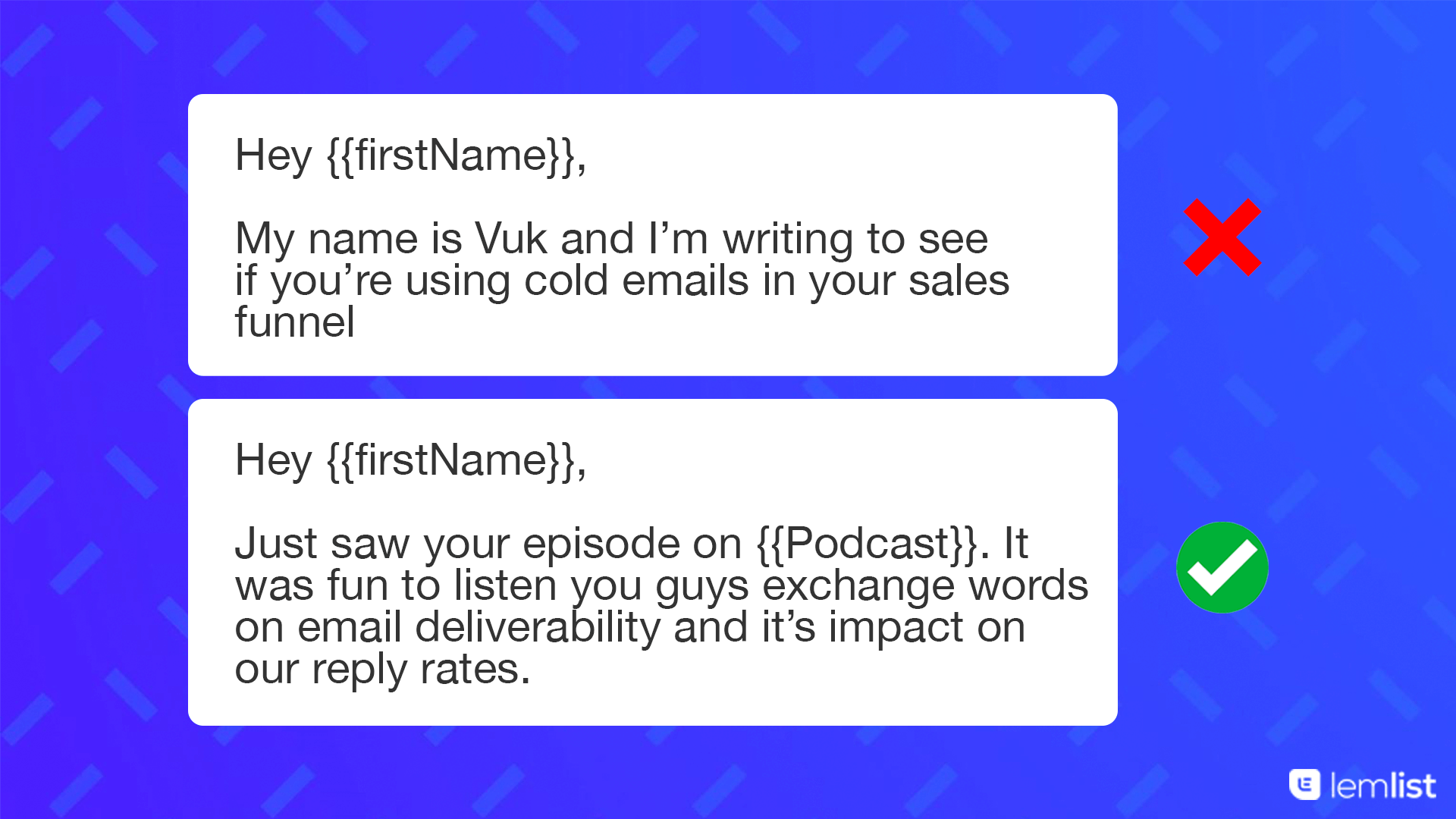
For you: How to start an email [32 examples]
Your middle section or “Story”
The question here is… how do you transition from an intro to an email pitch?
How can you create a story that your prospects can relate to?
To accomplish this, turn to the pain points to identify their challenges and try to convince them that your service or product is part of the solution.
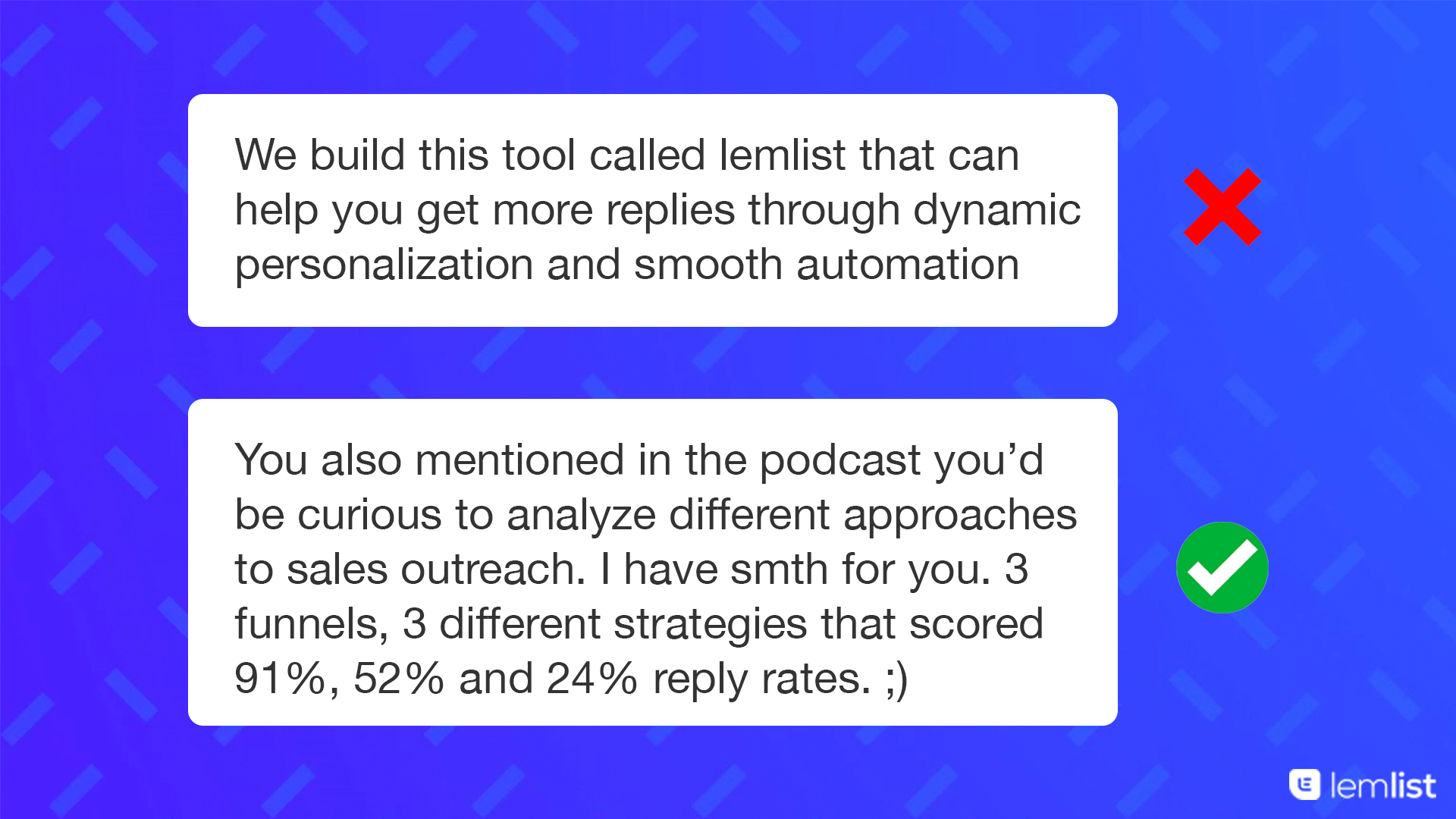
Here are a few suggestions on how to write your story:
- Relate on a SPECIFIC, not a broad pain point. Demonstrate that you have experience in the field. For example, mentioning “low click rate on Google rankings” and just “better SEO” are two different things
- Personalized video tactic. The image is optimized for clicks, while the story is in the video
- When seeking partnerships, find out somebody’s ambition (e.g. win with good content marketing). Then, adapt your pitch to “Hey, we can create great content together to achieve X, Y, Z”
- Make sure it’s not too long – aim for about 120 words.
Ultimately, the “Story” is a mix of empathy, a deep understanding of the prospect, a slice of humor, and proof/results for credibility.
Your call-to-action or email ending
The intro line inspires the prospect to read your email, whereas the story intrigues them. But the job’s not done there.
Your final target is to explain what’s the next step. Book a meeting, watch a video, sign up for a free trial, call to order, open a link… there are various call-to-actions to help you convert.
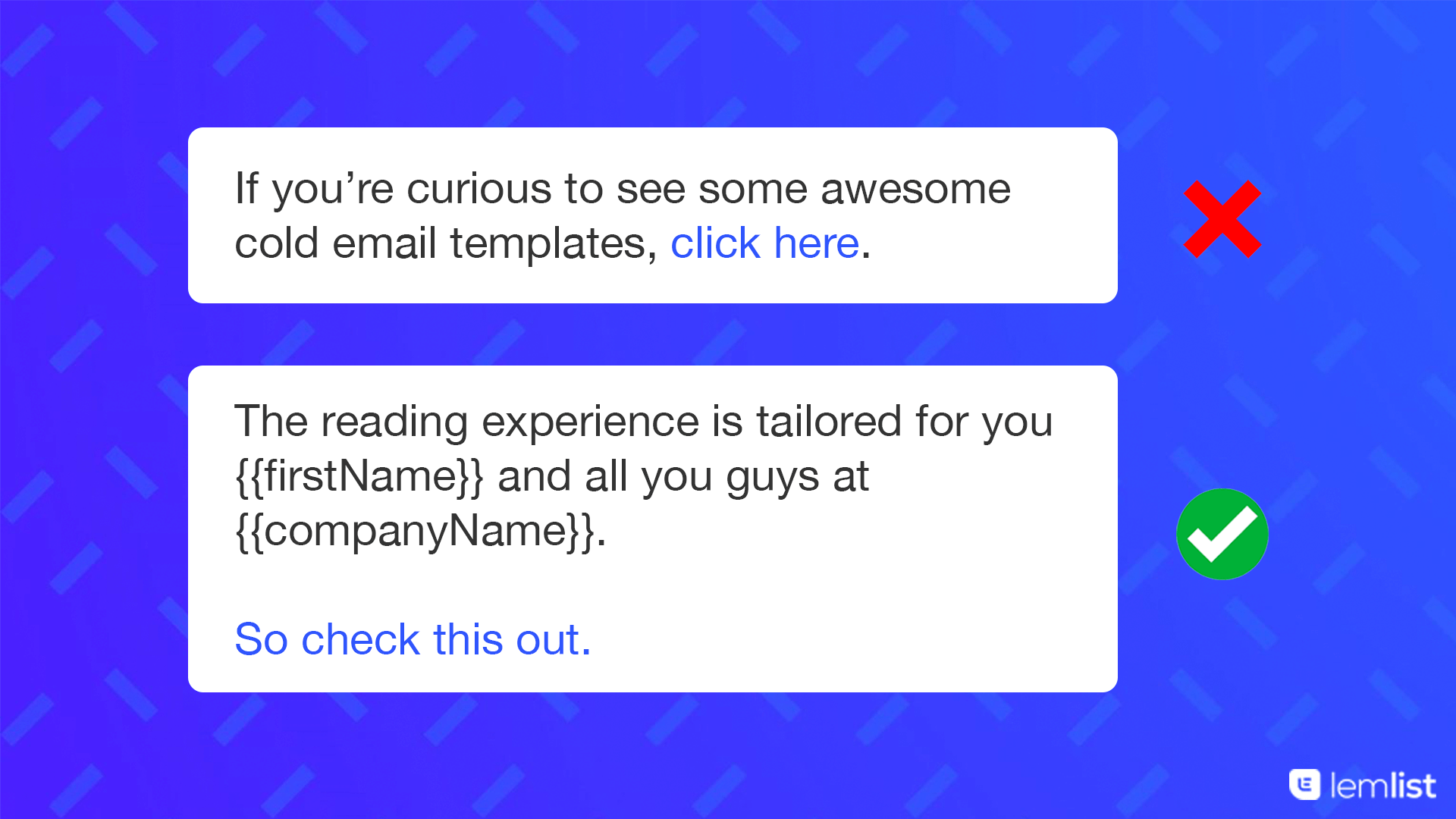
Stick to these rules for CTAs:
- Don’t have more than one call-to-action as you don’t want your prospects thinking about what to do for too long
- Explain what’s next in a short and sweet fashion
- Think about friction… how do you write an email ending that saves you from unnecessary emails going back and forth
If you need some inspirational examples, Ilya wrote a brilliant article on this topic.
Your signature
Last but not least is the signature. Don’t overthink this part too much, and, depending on the campaign, include the following:
- First name
- Job title and link the name of the company
- LinkedIn URL for further proof you’re a real person
Create a neat-looking signature with lemlist’s free email signature generator.
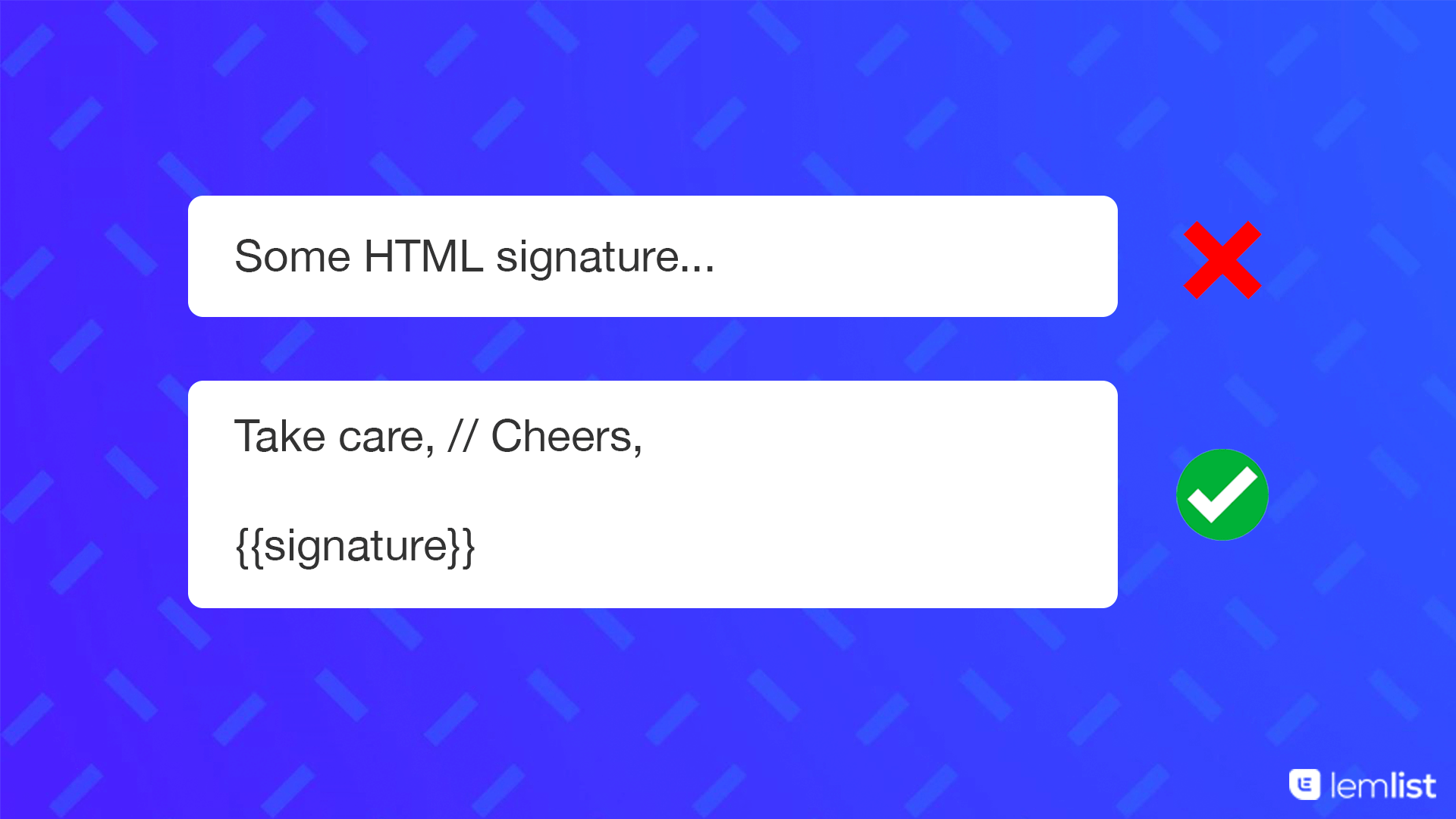
Don’t use HTML to make your email signature pop out, and avoid adding links that end up being a distraction to your main call-to-action.
Everything else, it’s a question of personal style.
How to write the winning cold email?
Finally, to wrap up this article, let’s analyze one successful cold email structure and break it down across all the components.
Here’s the cold email we used in the early days to connect with other founders and seal various partnerships and potential integrations.
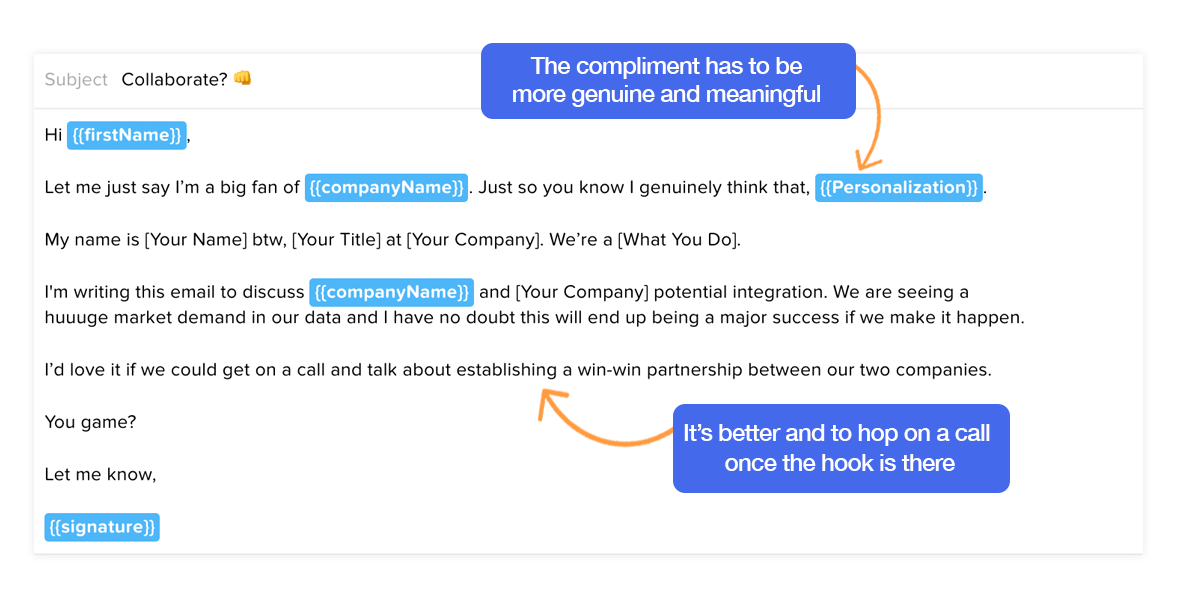
1. Tone
It’s very friendly. In most cases, these were folks from similar industries to ours, smaller to medium-sized companies, and around our age so the approach was informal.
2. Subject line
This email got a 90% open rate, but keep in mind that the audience you’re targeting plays half the play here.
3. Greeting
A simple one, not worth discussing further.
4. Intro line
Taking into consideration that anyone can say that they are a fan of somebody, there’s a {{Personalization}} tag to make the intro sound more genuine.
An example of this sentence can be…
and let me just say that your XYZ LinkedIn campaign BLEW MY FREAKING MIND… great work!
Comment on something you found interesting about that company and sparked your interest to write them. You can add this in a CSV file so it gets inserted automatically.
5. Story
Go straight for the integration here. Usually, all founders and marketing people respect that, they understand immediately your ask, and the expectation is set.
If you want to add an element to your story that’s going to be the first thing people see, go for a personalized image. As a result, each of your potential partners will get a unique image, made for their eyes only.
Here’s how you can personalize cold emails with custom images. ⬇️
6. Call to action
The best closing line for this type of cold email is a call. You meet the person, see how serious they are, talk about what each side wants, and what a win-win between you two looks like.
You also agree on the next steps and everyone’s responsibility down the road.
So what you need from them is a reply that expresses their openness to collaborate and then you can schedule a meeting.
7. Signature
Not worth further discussion either, except for me showing you what my {{signature}} tag becomes.
Mihaela,Content Marketing Manager @lemlist
Finally, the results of the campaign:
- 60 emails sent
- 90% open rate
- 50% reply rate
NOTE: The word “integration” in the cold email was also switched with “collaboration” if the email was oriented towards the content or co-promotion partnerships.
Bottom line
Keep practicing. The perfect cold email structure is achieved with time, after many tests and mistakes. The main trick is to avoid repeating the same mistakes over and over again.
P.S. If you wanna get more replies and conversions, our eBook How to write c cold email that gets replies to get even more actionable tips for the best outreach results.
Your source of actionable outreach tips and strategies that will help you get replies and grow your business.

